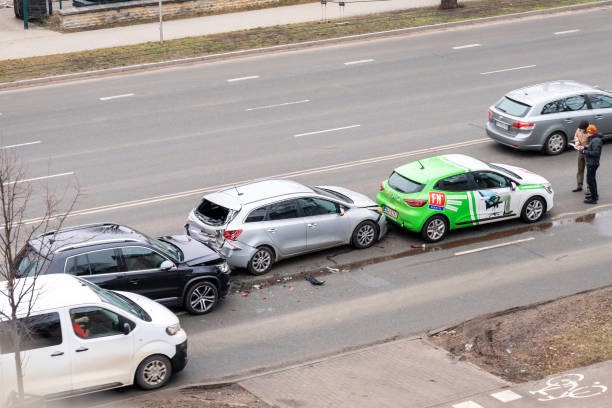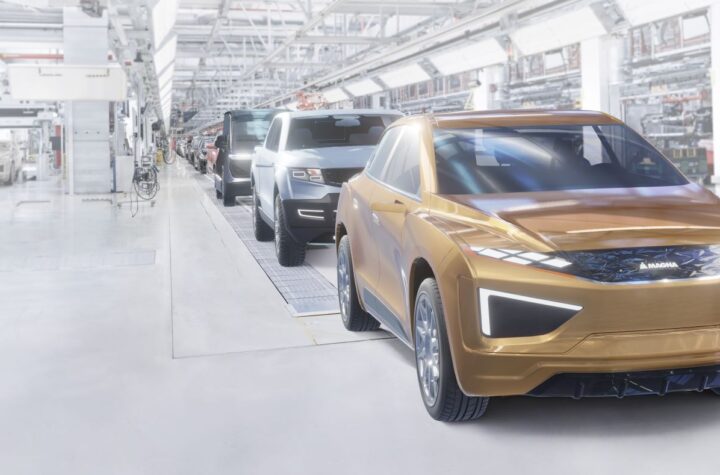
Much is made of the value of color. This is true whether valuing a vehicle in terms of social or fiscal currency. It is a key component upon which a vehicle is judged and valued. Color is literally the most obvious option one can specify when purchasing a vehicle. The level of R&D – and by extension investment – applied in order to achieve different hues, lusters and polychromatic effects, whilst reducing VOCs and mitigating “orange peelâ€, makes it a crucial aesthetic factor in the success or failure of a model.
In order to place a value on the color one needs to look at data in the German, British, French, Italian and Spanish nations as seven out of 10 cars registered in Europe are in the “big five†economies. Around 84% of cars in Europe are one of six colors: silver, blue, black, white or grey. This in itself is a false barometer for color popularity as one can argue that the new car market is force-fed specific colors by the purchasing policies of fleet operators. Therefore, the used car market can be considered a truer reflection of the individual tastes of the motorist when examining the premiums which these vehicles will sell for when nothing other than color is taken in to consideration.
At Glass’s we decided to investigate this issue. For our research vehicles were selected so that the sample reflected the same auction condition, age range and vehicle specification in order to ensure that variance caused due to anything other than color was minimized. After studying a sample of 3,000 vehicles in 2013 from auction through to retail, a number of very interesting patterns emerged.
Examining the B- and C-segments, we see that in the B-segment the highest performing colors at auction were grey, red, bronze, white and yellow. However, when comparing the relative performances between trade and retail, these five colors returned the lowest margins as a percentage of retail value. By contrast, silver, mauve and maroon all performed very strongly. The average margin for the B-segment was 16%. However, for colors such as silver and mauve, margins were over 20%. Combine this with the relatively low trade price and a stock-turn duration in-line with the samples average of 44 days, and these colors not only present good value for money at auction, but also give a healthy profit at retail.
When analyzing the “C-segment†two colors stood out: red and white. Red sells well at trade and retail (reflected by a high trade price and low days to sell). For example, when compared to blue C-segment cars, red sells on average within 26 days (-14 days vs the average selling time for blue vehicles) and at a slightly higher margin. Therefore, in an ideal 12-month scenario where all values remain constant, this would equate to a 58% uplift in margin if blue vehicles were replaced with red, but it would also demand an eyewatering 91% increase in capital expenditure to maintain stock. Juxtaposed against this is white which at auction sells very well commanding high prices, yet it takes nearly 10 days longer to sell at retail than the average. Furthermore, due to the inflated trade prices, the margins are squeezed as a result.
Similarly, yellow performs well at auction, yet takes longer to sell at retail and returns the worst percentage margin of any color in the sample, indicating that its popularity in the auction house was not necessarily mirrored on the forecourt. The linking factor is the issue of luster (metallic, pearlescent etc.). Analysis of the top performing colors by segment showed that these were metallic/high luster colors. Grey (which is almost exclusively metallic) performed very well across all segments, as did silver and interestingly brown,(which in all cases studied were metallic or pearlescent). Colors which were readily available in non-metallic finishes such as black (4% of European Parc), white (19%) and red (6%) all suffered as a consequence.
Similar situations were observed throughout all segmentations analyzed which raises a conundrum for the automotive industry: should manufacturers truncate their color options to only those that are “popular†to claim the largest margins? The answer is an emphatic “noâ€. If this happened margins would collapse as markets become flooded with similar colored vehicles. One could argue in favor of whites and blacks being more readily available (and affordable) in “non-solid†finishes as standard, as this would undoubtedly improve the vehicles appeal and appearance throughout its economic life. Vvariety is vital, especially when considering the more youthful, smaller segments of the market are increasingly demanding customization options in order to make individual statements.
This leads us to a question of whether the provision of bodywrapping as a manufacturer-endorsed approach for the “youthful†segments should be seriously considered for more than just niche applications. The act of doing so opens the vehicle owner to a world of colors and material effects, (plus it would allow for a palette of standard body colors to be employed under the wraps, which in themselves are safe and saleable should the previous owner prove to have somewhat eccentric tastes. This would give the owner all the creative freedom they desire for a price below that of a professional respray and give any future trade buyer the safety to buy at trade or as a part-exchange knowing that no matter how polarizing the vehicle’s appearance, removing the wrap in the body shop could add €’s to the value of the vehicle













More Stories
Getac on AI’s transformative impact on automotive production and aftersales
Contechs appoints Christopher Hilts as US Head of Business Development
Contechs appoints Christopher Hilts as US Head of Business Development